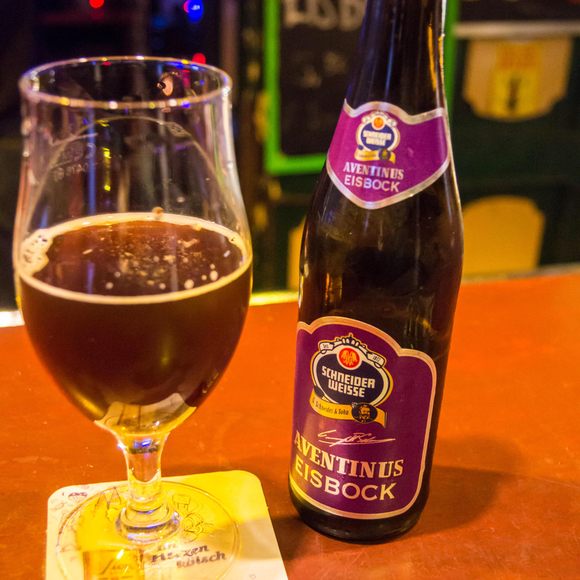Like many delicious discoveries, the creation of eisbock was likely an accident. According to the story told by Kulmbacher Brauerei, the most famous producer of the beer style, it all began in 1890 when a distracted apprentice left a barrel of bock (a moderately strong German lager) outside during the winter. When the head brewer found the barrel the following morning, there was ice inside. Although the water froze, the alcohol, thankfully, remained, leaving behind a highly concentrated beer.
And so the eisbock, or “ice bock,” was born. In a process known as freeze distillation, the frozen water separates from the alcohol and sugars, resulting in sweet, potent brew. Eisbocks hover around 9 to 15 percent alcohol by volume, with malty, rich, almost liqueur-like flavors.
It should be noted that eisbock and “ice beer” are not the same thing. In the 1990s, a modified form of freeze-distillation became very popular as a way to make lagers in the United States. While these beers typically have “ice” in their name (Natural Ice, Bud Ice, etc.), they’re a different breed from eisbocks. Unlike the traditional German style, brewers merely wait for these beers to become slushy instead of waiting for the ice of fully form. The resulting brew isn’t anywhere near as strong or flavorful as the eisbock. For the bold, full-bodied experience, look for a brand such as Kulmbacher’s or Aventinus.
Where to Try It
-
Kulmbacher Brauerei
Lichtenfelserstr 9, Kulmbach, GermanyKulmbacher's eisbock is 9.2 percent ABV.
-
Ambrosetti
Schillerstrasse 103, Berlin, 10625, GermanyDiscover over 600 types of beer at this long-standing emporium.
Written By
 Sam OBrien
Sam OBrien
Sources
- books.google.com/books?id=Ga4MYyZq-RMC&pg=PA321&dq=eisbock+oxford&hl=en&sa=X&ved=0ahUKEwjiucv9r9vcAhWGmeAKHU9GAoIQ6AEIJzAA#v=onepage&q=eisbock%20oxford&f=false
- books.google.com/books?id=6eRbBAAAQBAJ&printsec=frontcover&dq=beer+bible+eisbock&hl=en&sa=X&ved=0ahUKEwjMl8vtj9zcAhXqAcAKHdkBBJ0Q6AEIJzAA#v=onepage&q=eisbock&f=false
- books.google.com/books?id=87FrDgAAQBAJ&printsec=frontcover&dq=tasting+beer&hl=en&sa=X&ved=0ahUKEwjZz67mj9zcAhUKe8AKHbyhDaYQ6AEIJzAA#v=onepage&q=eisbock&f=false
- schneider-weisse.de/en/node/54













